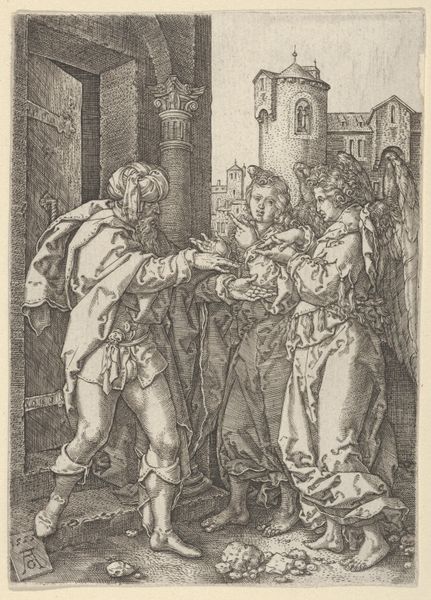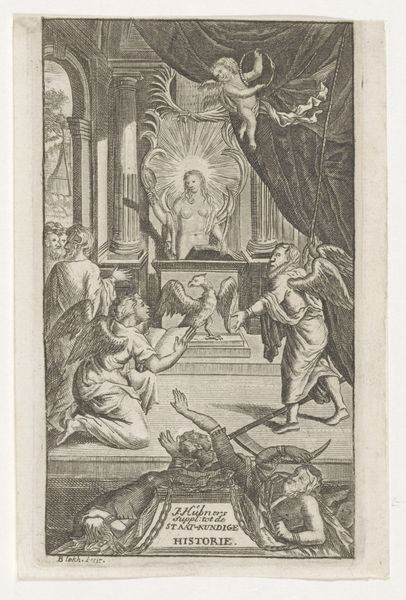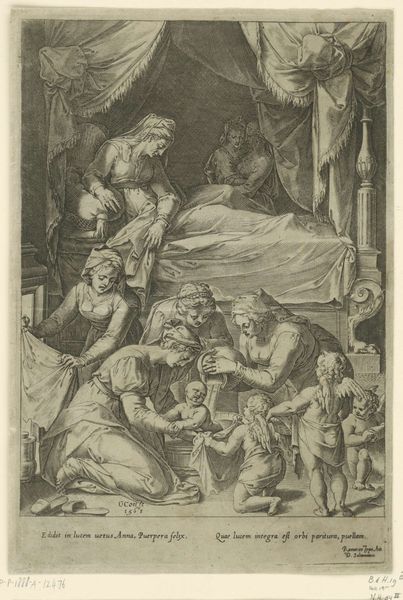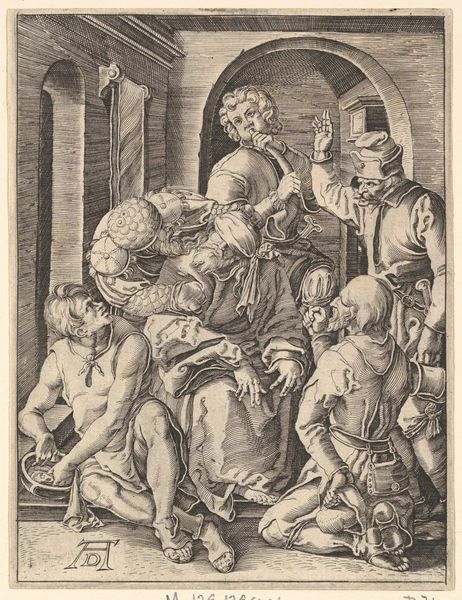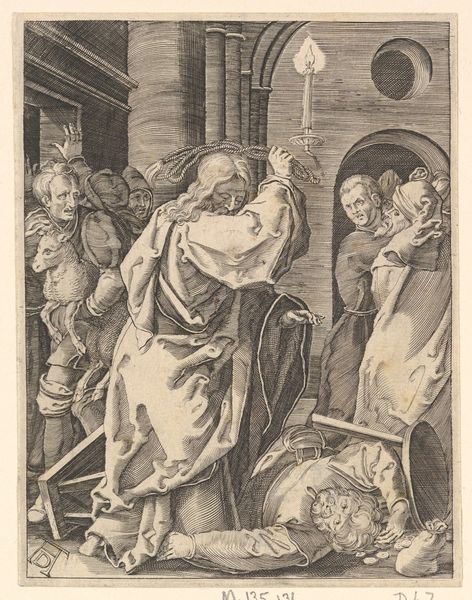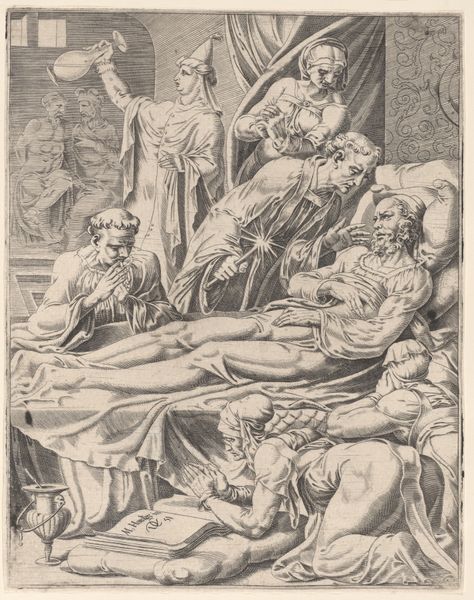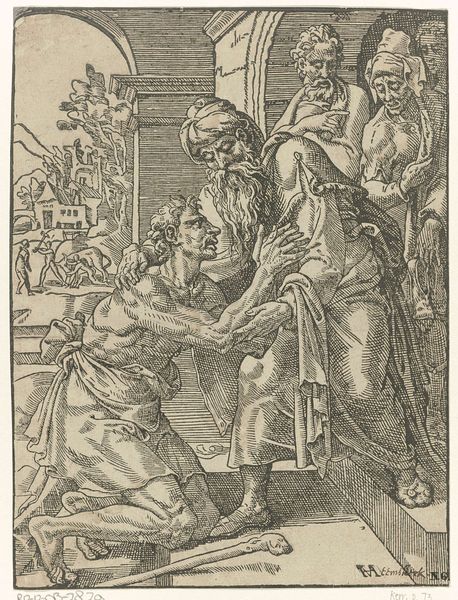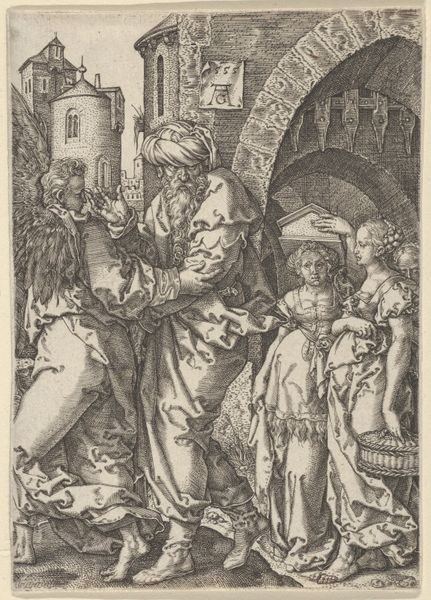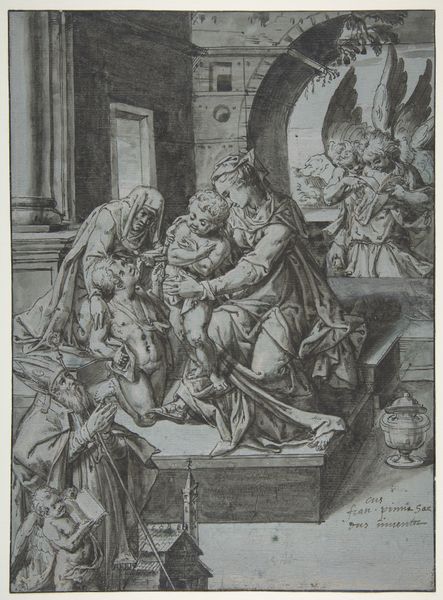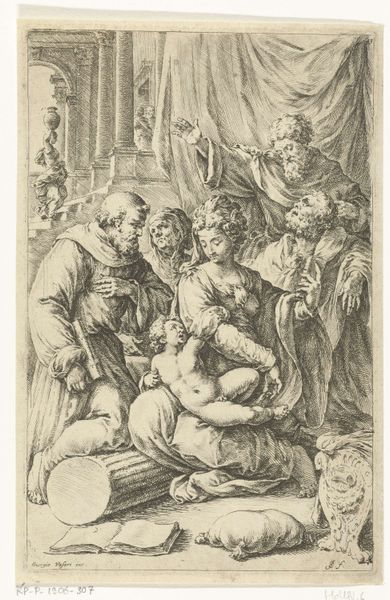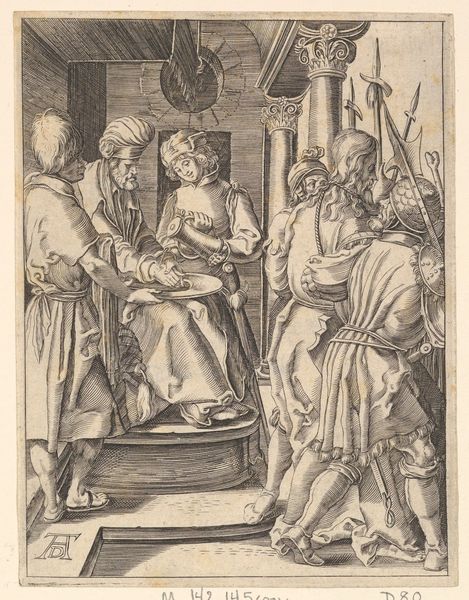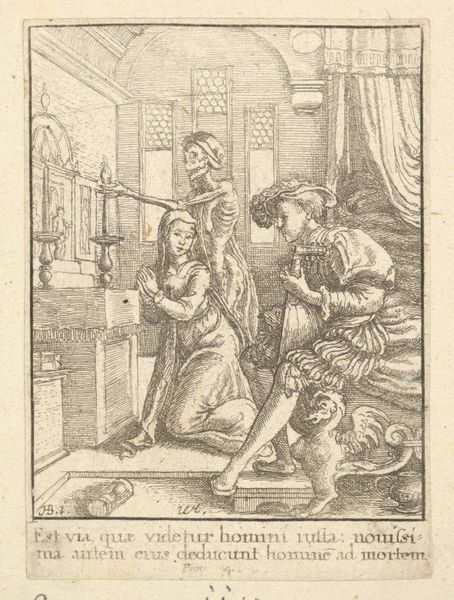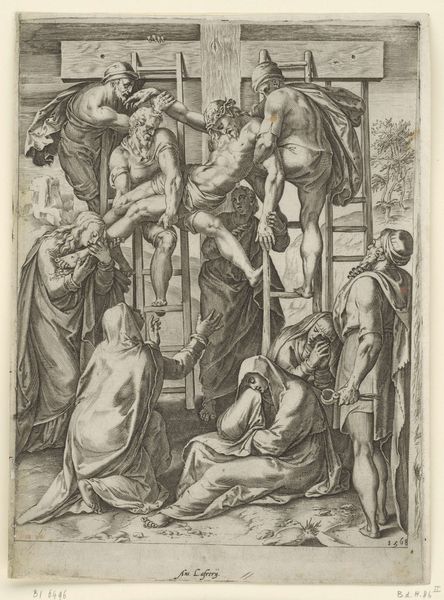
Joseph and Potiphar's Wife, from The Story of Joseph 1546
0:00
0:00
drawing, print, engraving
#
drawing
#
narrative-art
# print
#
figuration
#
men
#
history-painting
#
italian-renaissance
#
engraving
Dimensions: Sheet: 4 1/2 × 3 1/16 in. (11.5 × 7.7 cm)
Copyright: Public Domain
Curator: The stark contrast between light and shadow immediately evokes a sense of moral conflict and hidden tensions in this 1546 engraving by Georg Pencz. It’s called "Joseph and Potiphar’s Wife, from The Story of Joseph". Editor: It feels... theatrical. The dramatic poses, the stage-like setting. It’s charged with power dynamics, no? I wonder how 16th-century audiences reacted to this depiction of gender roles and sexual temptation. Curator: Pencz was drawing on a well-known biblical narrative. Potiphar’s wife, scorned by Joseph, uses his garment as proof that he attempted to seduce her. Garments carry enormous symbolic weight—a tangible representation of reputation and status. It also symbolizes a transition from the inner, personal self to the outer, social world. The cloak’s rough handling conveys a story of betrayal, highlighting her position. Editor: Exactly! And there is such clear social inequity on display, no? Look at the way her grip on Joseph's garment seems designed to strip him of honor but to reinforce her agency. The room is a signifier of affluence, an intimate theater that excludes any witnesses and protects the elite at the expense of lower-class members of the household. Curator: In visual language, objects gain weight and importance. Do you notice how the placement of those objects—the ewers and vessels, as well as the hanging lantern—functions as symbols of a hidden sphere and secret sins? The ewer represents purification; perhaps Pencz suggests a contrast with the uncleanness of Potiphar's desire? Editor: Absolutely! The lantern casts light only partially, as if truth itself is obscured. It begs the question—whose version of truth are we seeing? What would a postcolonial or feminist lens reveal about Joseph's side of the story, which is suppressed here? Is he truly an innocent victim or a scapegoat in a larger socio-political game? Curator: Thinking about memory embedded in symbolic artifacts can indeed reshape understanding. It is as if the meaning of the garments has altered under our consideration. Editor: These lasting artistic legacies can certainly speak volumes if we listen critically and empathetically to the intersectional histories behind them.
Comments
No comments
Be the first to comment and join the conversation on the ultimate creative platform.
